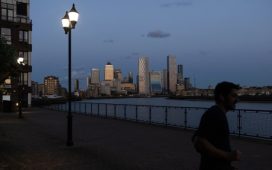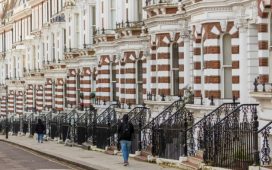King Charles has declared that profits from a £1bn-a-year deal to lease offshore windfarms will be used for the “wider public good”, weeks after citing the cost-of-living crisis in his Christmas Day speech. The funds come from the crown estate. Here, we look at the body and how it functions.
What has happened?
The crown estate, which generates money for the Treasury and the royal family, said on Thursday that it had signed lease agreements for six offshore wind projects that will provide it with about £1bn a year in revenue and have the potential to power more than 7m homes. Three of the six projects are located off the coasts of north Wales, Cumbria and Lancashire, and three are in the North Sea off the Yorkshire and Lincolnshire coastlines.
What has the king said?
Buckingham Palace has described the money generated from the new leases as a “windfall”. The king’s keeper of the privy purse, Sir Michael Stevens, has asked the government for “an appropriate reduction” in the percentage of crown estate profits used for the sovereign grant. The exact amount has not been declared. Under the taxpayer-funded sovereign grant, which is currently £86.3m a year, the king receives 25% of the crown estate’s annual surplus, including an extra 10% for the refurbishment of Buckingham Palace.
What is the crown estate?
The crown estate – a vast portfolio of land and property – belongs to the reigning monarch “in right of the crown”. But it is not their private property. The monarch surrenders the revenue from the estate to the Treasury each year for the benefit of the nation’s finances, in exchange for the sovereign grant. The funding arrangement dates back to 1760, when George III reached an agreement to surrender his income from the estate in return for an annual fixed payment.
What assets does it have?
The monarch owns the seabed and half of the foreshore around large parts of England, Wales and Northern Ireland, generating revenues from oil and gas drilling rights and royalties, as well as wind and wave farm developments. The portfolio includes property across large parts of central London including St James’s and Regent Street, as well as farmland, offices and retail parks. The crown estate is also responsible for managing the Windsor estate, which includes parkland and ancient woodland, and Ascot racecourse.
How did the monarchy come to own the seabed?
The right to collect royalties from wind and wave power around the British coastline was handed to the monarchy in 2004, when Tony Blair’s Labour government granted it through an act of parliament. Amid the transition to low-carbon energy, seabed plots have become more sought after and lucrative for the crown over the last two decades.
What is the crown estate worth?
The revenue from the crown estate is worth more than £312m a year. The total value of the crown estate’s properties swelled by 8.3% last year at £15.6bn. The current value of the seabed rights is estimated at £5bn, and the six newly awarded licences could generate up to £9bn over the next 10 years.
Is that all of the monarchy’s assets?
The sovereign and the wider royal family have two other sources of income – the Duchy of Lancaster, which has various agricultural and commercial interests, and the Duchy of Cornwall – with combined assets of more than £17bn.











